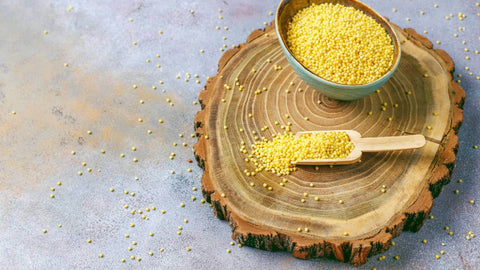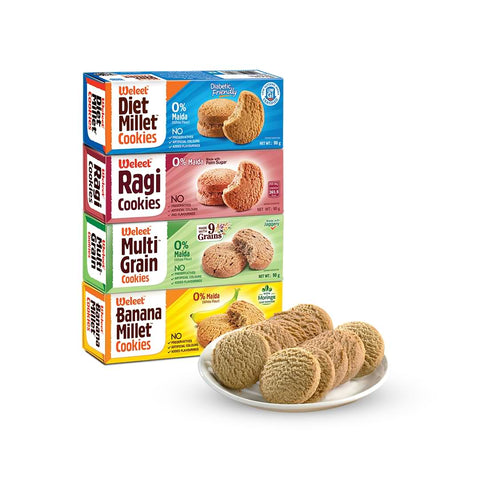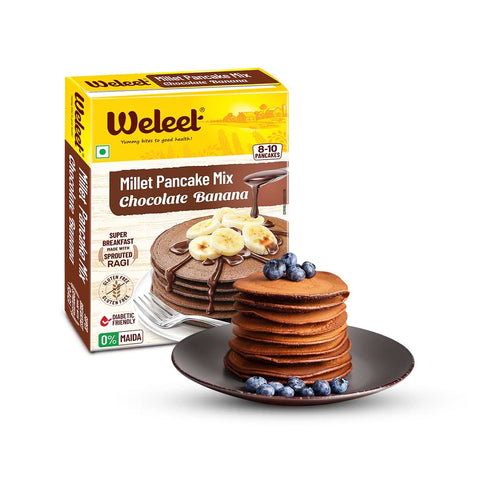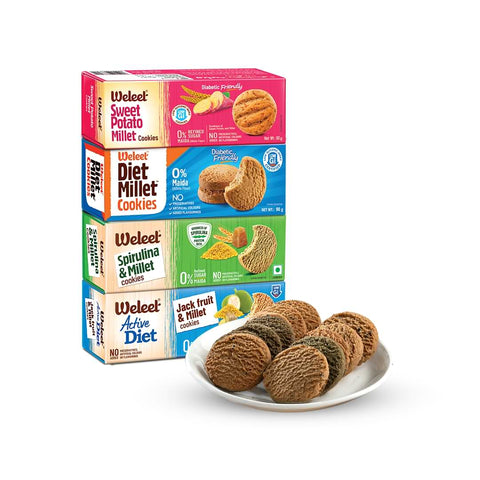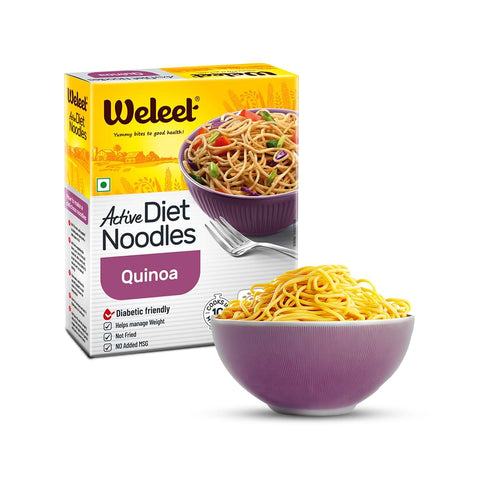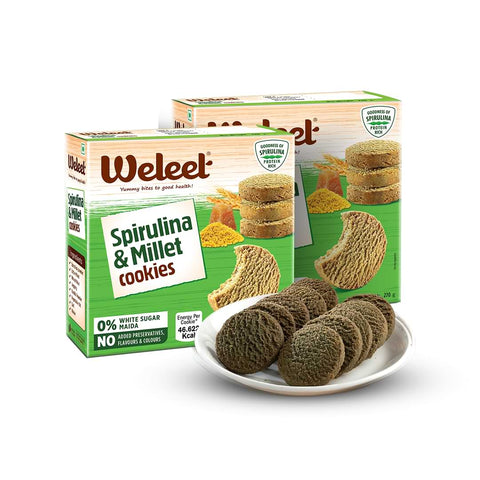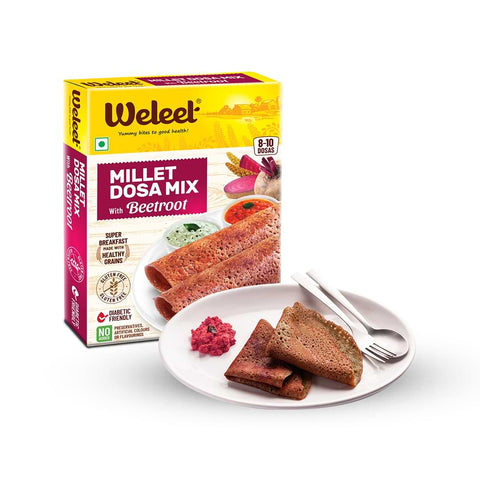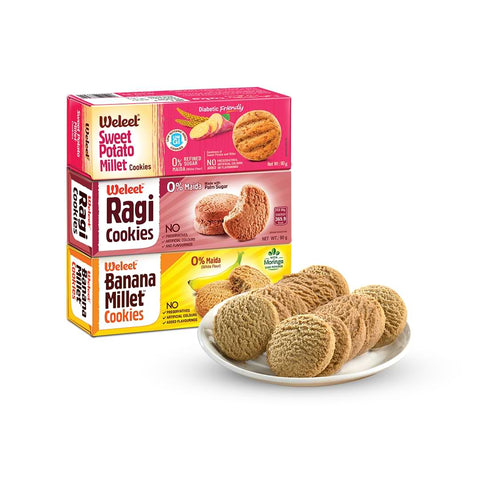In India, wheat and rice are indeed the main staples of the diet, serving as the primary sources of energy for the population. An average rural Indian consumes around 6 kg of rice per month. but not so much of millet even though it has immense nutritional benefits.
At Weleet, we are dedicated to promoting healthier food choices that benefit both your well-being and the environment. We’ll explore the key differences between millet and rice, helping you make an informed choice when it comes to your diet. If you’re looking for healthy nutritious food, you can conveniently shop forour cookies, noodles, and snacks on our platform.
And let’s go over why millet is much more important than ricefor your health as well as the environment.
Nutrition
Millets, those small seeds, a pack of powerful nutritional punch. They are rich in fiber, protein, minerals, vitamins, and antioxidants. Additionally, millets are gluten-free, making them an ideal choice for those with gluten sensitivities.
On the other hand, rice, particularly white rice, is a larger seed derived from the rice plant. While it providescarbohydrates, it lacks the robust nutritional profile of bajra. Brown rice, a healthier alternative to white rice, contains more nutrients, but it still falls short of millet in many aspects.
When you compare 100 grams of raw millet to raw white rice, millet stands out with higher levels of calories, carbohydrates, protein, fiber, and a range of essential nutrients, including magnesium, phosphorus, iron, zinc, copper, and manganese. It also top the charts in vitamins B2, B5, and B6. Furthermore, bajra have a lower glycemic index, which means they don’t cause rapid spikes diabetics patients sugar level
Health
When it comes to health, the choice between millet and rice can significantly impact various aspects of your well-being. These grains offer different nutritional profiles and have distinct effects on your health –
Heart
Millet support heart health by reducing blood pressure and cholesterol levels, thanks to their fiber and magnesium content. They also include antioxidants, which shield your cells from harm. Rice can also be heart-healthy when consumed in moderation and combined with other nutritious foods. However, white rice may negatively impact your heart by elevating blood pressure and cholesterol levels, primarily due to its high glycemic index and low fiber content.
Blood sugar
Millet excel in stabilizing blood sugar levels with their low glycemic index and high fiber, while also improving insulin sensitivity. Rice, when consumed sensibly and with other wholesome foods, can contribute to good blood sugar management. However, white rice can cause blood sugar spikes due to its high glycemic index and low fiber content.
Gut
Millets support gut health with their high fiber content, promoting a healthy gut microbiome and preventing constipation. Rice can also aid gut health when eaten in moderation with other nutritious foods. However, white rice may lead to digestive problems due to its low fibre content.
Cancer
Millets are rich in antioxidants that protect your cells from damage, reducing the risk of cancer. These antioxidants help combat the harmful effects of free radicals, which can harm your DNA. Rice, when consumed in small amounts and in combination with other healthy foods, can also contribute to cancer prevention. However, white rice may increase the risk of cancer due to its lower antioxidant content.
Environment
When considering the environmental impact, millets outshine rice. Its is more environmentally friendly because they require less water, fewer fertilizers, and pesticides for cultivation. They are resilient and can thrive in challenging conditions, including dry, salty, and high-altitude areas. In contrast, rice demands more water, fertilizers, and pesticides. Additionally, the way rice is grown produces more greenhouse gases, such as methane and nitrous oxide.
In conclusion, both millets and rice have their merits, but millets offer a range of advantages in terms of nutrition, health benefits, and environmental sustainability. They are nutritionally superior, support heart health, stabilize blood sugar, enhance gut health, and help prevent cancer. Moreover, they also treat the environment more gently.
While rice can provide health benefits when consumed in moderation and with a well-balanced diet, excessive consumption, especially of white rice, may increase the risk of heart disease, diabetes, and cancer. Additionally, rice production has a more significant environmental footprint.
Therefore, choosing millet over riceis a wise decision if you aim to prioritize both your health and the planet. However, incorporating both grains in small amounts alongside other healthy foods can offer a diverse and balanced diet that combines the best of both worlds. We’re here to support your journey towards healthier and more sustainable eating habits. we provide many easy-to-make healthy alternatives to your favorite dishes like pasta, noodles and dosa. where rice is replaced with much healthier ingredients.
Shop millet cookies, noodles, and snacks from Weleet foods for healthy foods for every day on our platform, and discover the benefits of including millet in your diet.


